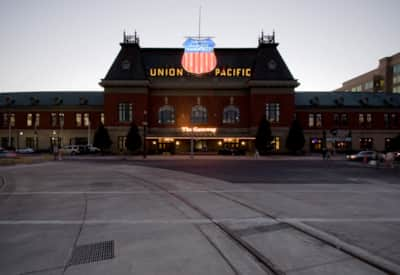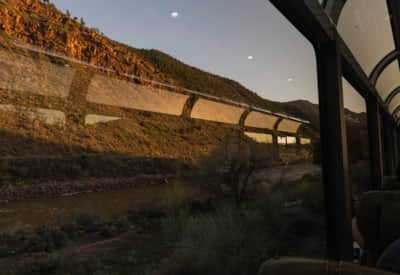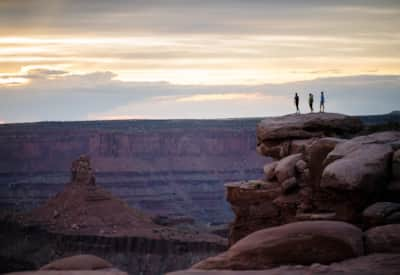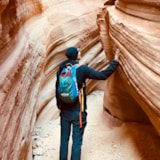Luxury and Legacy on Utah's Railways
In modern Utah, luxury and scenic rail journeys like the Canyon Spirit's “Rockies to Red Rocks” route and Amtrak's California Zephyr are redefining travel.
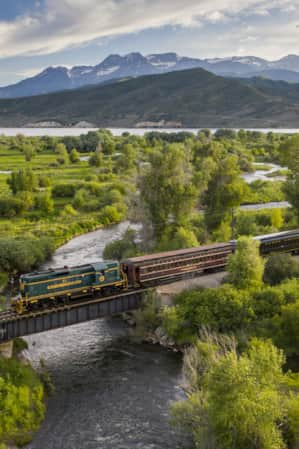
Dawn stretches across Utah. The early sun turns the rocks a pale gray, then gold, then a deep red. It's a sweeping landscape. The light and shadow unveil the terrain, where rocks jut out like monoliths into the sky. With no roads nearby, the only sign of humanity is a parallel track stretching into the horizon. This is train travel through the western wilderness and Utah's most stunning terrain.
Utah's railroads have a deep and rich history that has defined the state’s past and modern era. Tracks run through deserts and over mountains, displaying Utah’s endless vistas and paying homage to more than 150 years of transcontinental travel.
The driving of the golden spike at Utah’s Promontory Summit in 1869 marked the completion of the transcontinental railroad and the beginning of a storied rail legacy. This event symbolized the nation's connectivity and progress and put Utah on the map, with passengers disembarking trains at Ogden's Union Station to transfer and continue their journey. Today, visitors can slow down and focus on the luxury and novelty of modern train travel — against the equally luxurious backdrop that is Utah’s landscape.


Luxurious Seats with World-Class Views: Train Travel in Utah Today
Canyon Spirit offers a high-end, luxurious journey from Moab to Denver, ensuring passengers don't miss a moment of the breathtaking scenery. The route can be traveled eastbound, westbound, or with a return journey, and includes an overnight in Glenwood Springs, Colorado, plus the option to start or end your trip in Salt Lake City. One way, the route covers more than 350 miles of the American Southwest, including Ruby Canyon, Mount Garfield, and Moffat Tunnel. Whether you begin or end your journey in Moab, you can reserve time to explore off-train highlights like Arches and Canyonlands National Parks or Dead Horse Point State Park, as well as unlimited opportunities for guided outdoor recreation.
The stunning mountains-meet-desert route leaves passengers speechless as they marvel from the panoramic train windows. As the train carves through the landscape, the aroma of Utah sagebrush and pine trees mingles with the earthy scent of rain on dry soil, while the distant sounds of wildlife echo against the canyon walls. The cool breeze through an open window carries the dry air of history, making the red rocks and clay not just a sight, but a sensation.
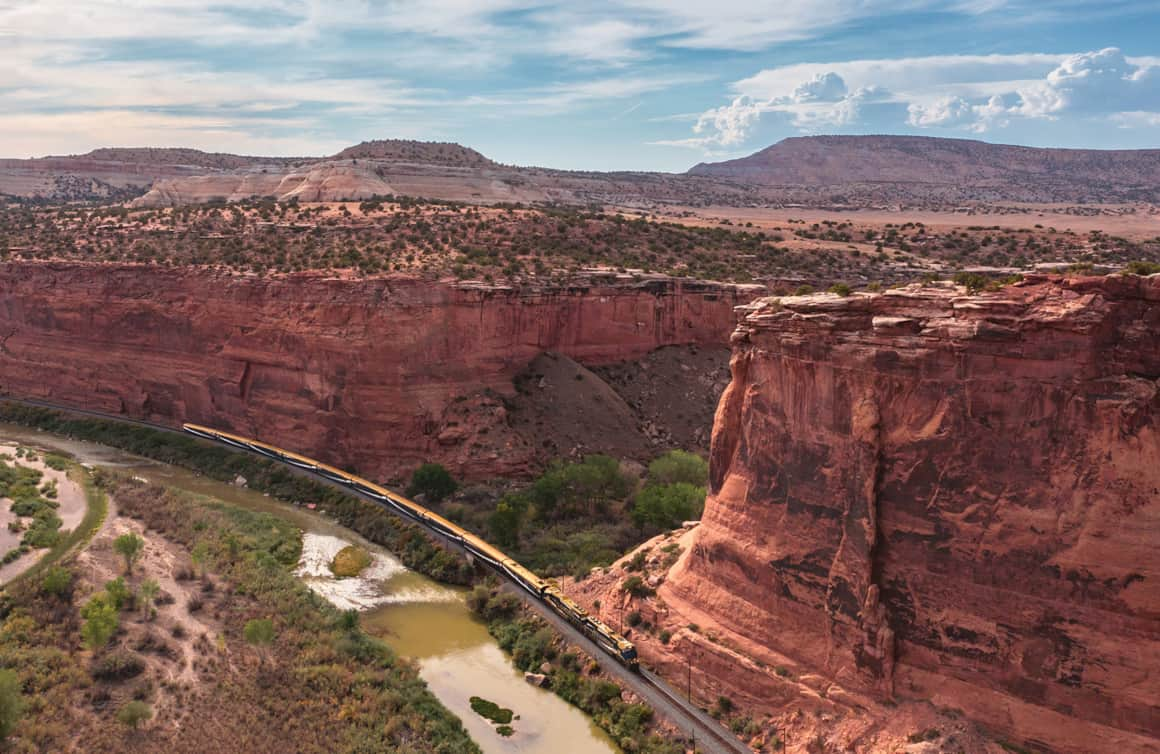
The Moab to Denver route can be traveled eastbound, westbound, or with a return journey, and includes an overnight hotel stay in Glenwood Springs, Colorado.
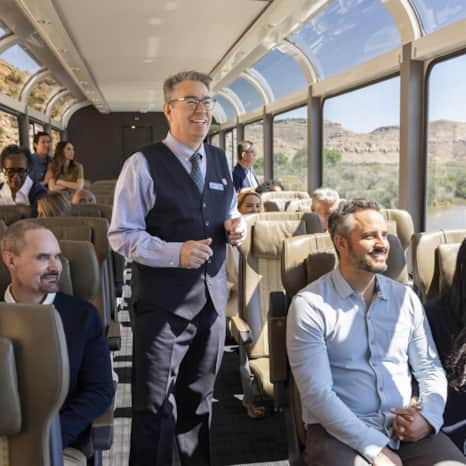
The Canyon Spirit coaches feature oversized glass-dome windows, an outdoor viewing area and are attended by hosts with stories about the route's historic sites, scenery and wildlife.
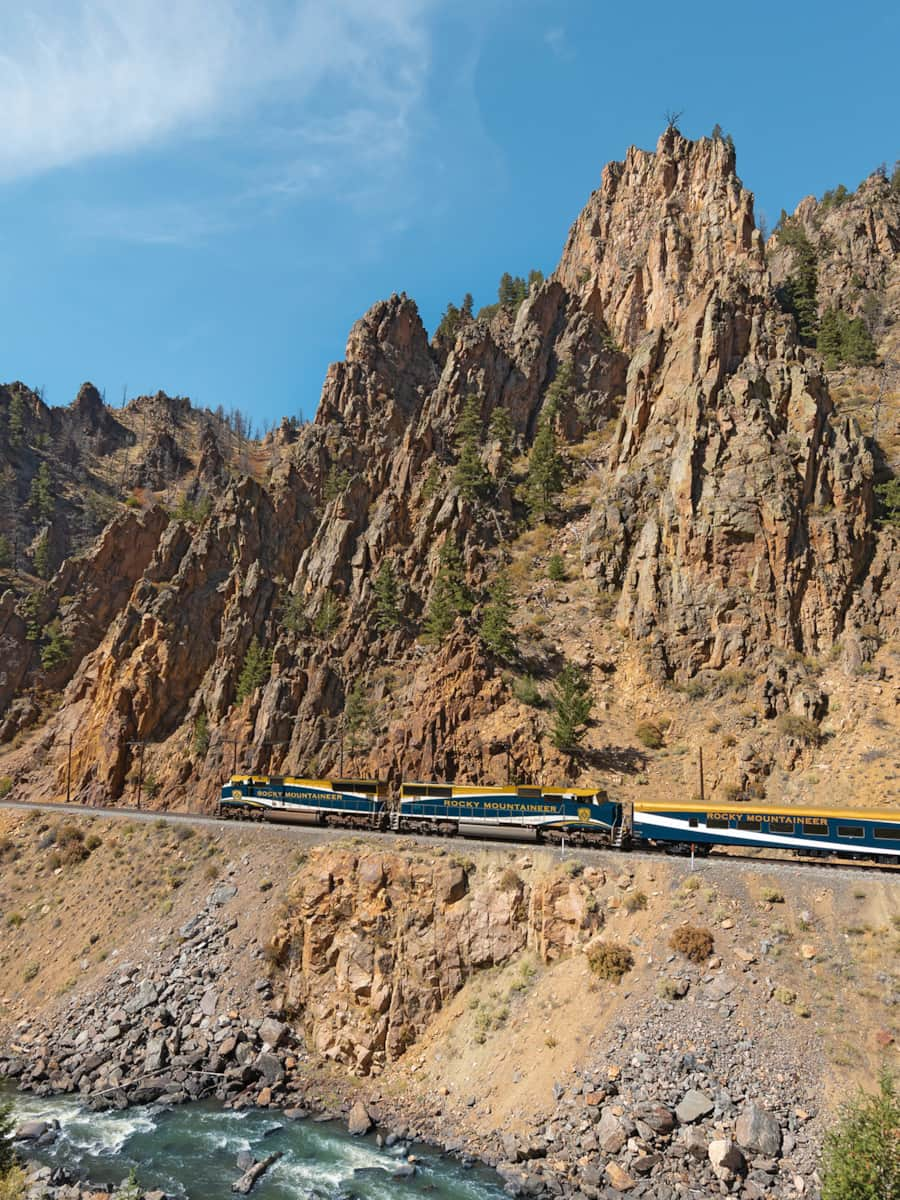
This two-day rail journey is steeped in history and panoramic views — think breathtaking plains, mountain vistas and chromatic deserts alongside towering red rock canyons carved by the Colorado River.
"As the train carves through the landscape, the aroma of Utah sagebrush and pine trees mingles with the earthy scent of rain on dry soil, while the distant sounds of wildlife echo against the canyon walls."
And where the Canyon Spirit leaves off, Amtrak’s California Zephyr picks up. The full Zephyr route covers ground from Chicago to San Francisco. But with four stops in Utah, riders can enjoy a scenic excursion through the Mountain West. From Grand Junction, Colorado, the Zephyr enters Utah via the southeast corner of the state, winding through Ruby Canyon and continuing north. The first Utah stop is Green River, a gateway to national parks like Arches, Canyonlands and Capitol Reef, as well as the San Rafael Swell and Goblin Valley.
As the California Zephyr heads north through Utah, it passes through the historic mining town — and now buzzing arts hub — Helper. With a well-preserved Main Street from the town’s booming industrial era, Helper is now populated by art galleries, museums and shops. Hikes and nearby cultural sites like Nine Mile Canyon allow adventurers to step into the past and marvel at native dwellings and petroglyph panels.
Following Helper, the Zephyr heads north to Provo, where local shopping, dining and sightseeing are just a short ride or walk from the station. The final stop in Utah lets passengers off in the heart of downtown Salt Lake City, where sporting events, a vibrant nightlife scene and spectacular mountains abound. In the winter, guests can experience The Greatest Snow on Earth® and world-class skiing in this former Olympic host city, making for a perfect combination of everything Utah has to offer — from red rocks in the south to snowy peaks in the north.
This route brings passengers face to face with the untouched majesty of the West and gives a taste of urban Utah. A hop-on, hop-off experience requires individual tickets between each station and can be booked with the help of an Amtrak agent. Additionally, Amtrak offers an array of pre-planned vacation routes from Salt Lake City.
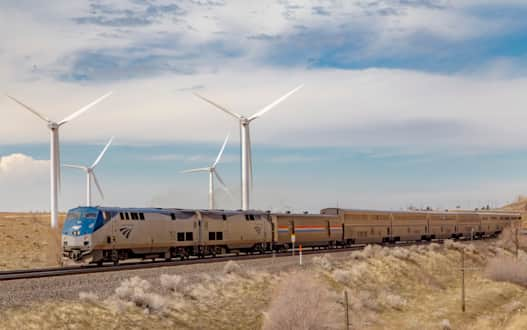
Experienced travelers say Amtrak's California Zephyr, which runs daily between Chicago and San Francisco, is one of the most beautiful train trips on Amtrak’s national system.
Photo: Courtesy of Amtrak
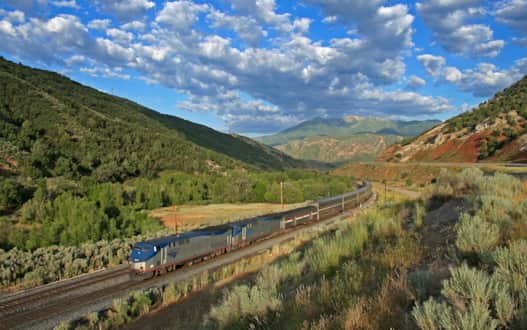
From Chicago, the Zephyr's course runs west, turning south through the plains of Nebraska to Denver, across the Rockies to Salt Lake City, and then through Reno and Sacramento into Emeryville/San Francisco.
Photo: Courtesy of Amtrak
"And where the Canyon Spirit leaves off, Amtrak’s California Zephyr picks up. The full Zephyr route covers ground from Chicago to San Francisco. But with four stops in Utah, riders can enjoy a scenic excursion through the Mountain West."
Unique Train Experiences in Utah
Across Utah, you’ll find off-rail experiences that will transport you to the era of steam and steel. Museums and galleries highlight the state’s industrious past and its significance in railroad history, while immersive train experiences allow visitors to experience the past, and have a little fun while doing so.
Heber Valley Railroad
A ride on the Heber Valley Railroad is like traveling back to a simpler era. Winding through part of Provo Canyon, the historic steam train offers breathtaking views of Mount Timpanogos and the serene Deer Creek Reservoir. With themed rides that range from the Christmas-themed “North Pole Express” (which sells quickly, so be sure to reserve early) to magical wizard trains and wild west escapades, it's a journey that delights all ages, immersing passengers in the beauty and imagination of Heber Valley's landscapes and lore.
Imagine a young family aboard the Heber Valley Railroad, where a child's laughter fills the air as they spot deer along the riverbank, their hands pressed against the cool glass, eyes wide with wonder. It's moments like these that transform a simple train ride into a cherished family memory, bonding over shared discoveries. At the end of the tracks, you'll disembark into central Heber Valley, where the opportunities for further historical exploration are moments away (Read: Historic Heber: 4 Spots Where You Can Journey to the Past)
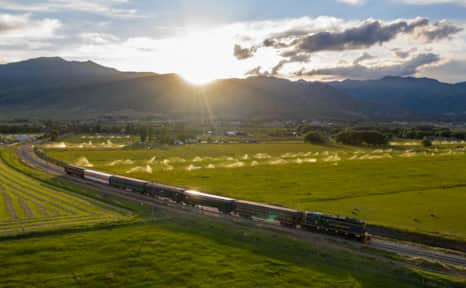
Take in a view of "Utah's Alps" from the Heber Valley with its alpine splendor and access to endless outdoor recreation.
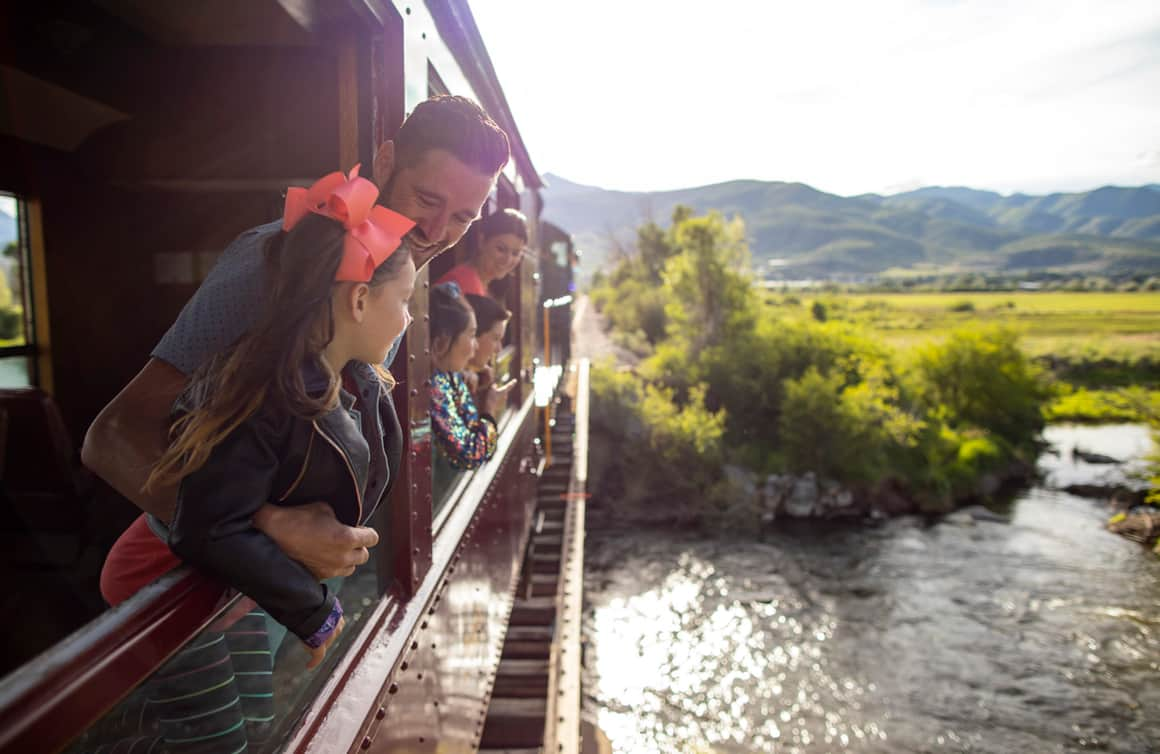
The Heber Valley Railroad offers guests stunning views of the Wasatch Mountains and makes train travel fun with hosted concerts, themed rides, and historical reenactments.
Dairy Keen: A Train and Culinary Showcase in Heber
Nestled in Heber City, Dairy Keen - Home of the Train is not just a restaurant; it's a slice of local charm where delicious meals and a love for trains come together. Known for its award-winning burgers and shakes, this family-friendly eatery also features a model train that delights diners as it chugs along its overhead track, adding a touch of whimsy to an already memorable meal.
Ogden's Union Station: Crossroads of History
Ogden's Union Station is a testament to the era of railroading that shaped the American West. This historic hub, now housing museums like the Utah State Railroad Museum and the John M. Browning Firearms Museum, offers a deep dive into the technological marvels and the people who forged the rail paths through Utah in the 1800s.
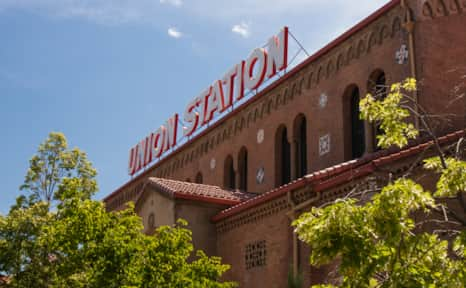
There are also two galleries and regular events in the classic train station, whose iconic neon sign keeps watch over Historic 25th Street.
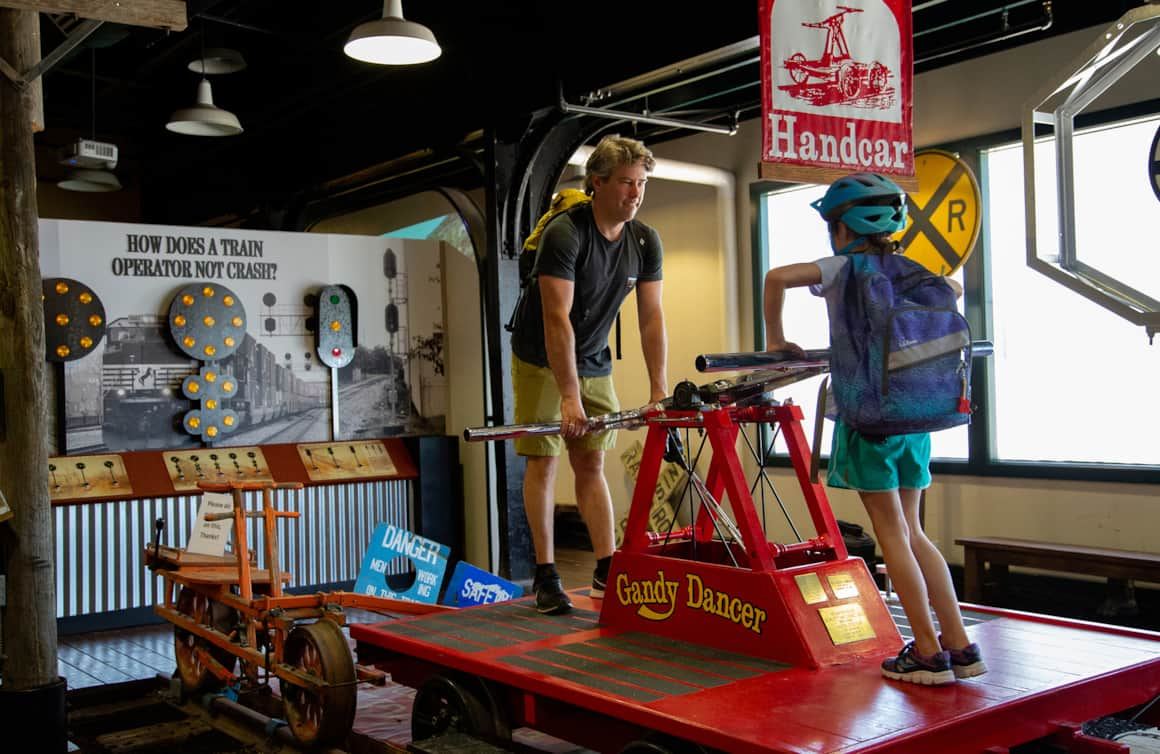
Ogden's Union Station is home to Utah State Railroad Museum, the John M. Browning Firearms Museum, Browning Kimball Classic Car Museum and Utah State Cowboy and Western Heritage Museum.
Golden Spike National Historic Site: Where East Meets West
The Golden Spike National Historic Site marks a pivotal moment in American history, where the Union and Central Pacific Railroads converged at Promontory Summit in 1869. Today, visitors can step back in time to witness reenactments of the Last Spike Ceremony, explore replicas of the steam locomotives that met nose to nose, and walk the very grounds that forever changed the pace of American progress and exploration.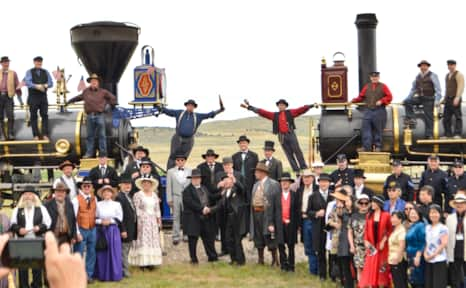
Visit the Golden Spike National Historic Park to relive the history with exhibits and demonstrations, and take in the beauty of the surrounding Great Basin Desert and nearby Great Salt Lake and Spiral Jetty.
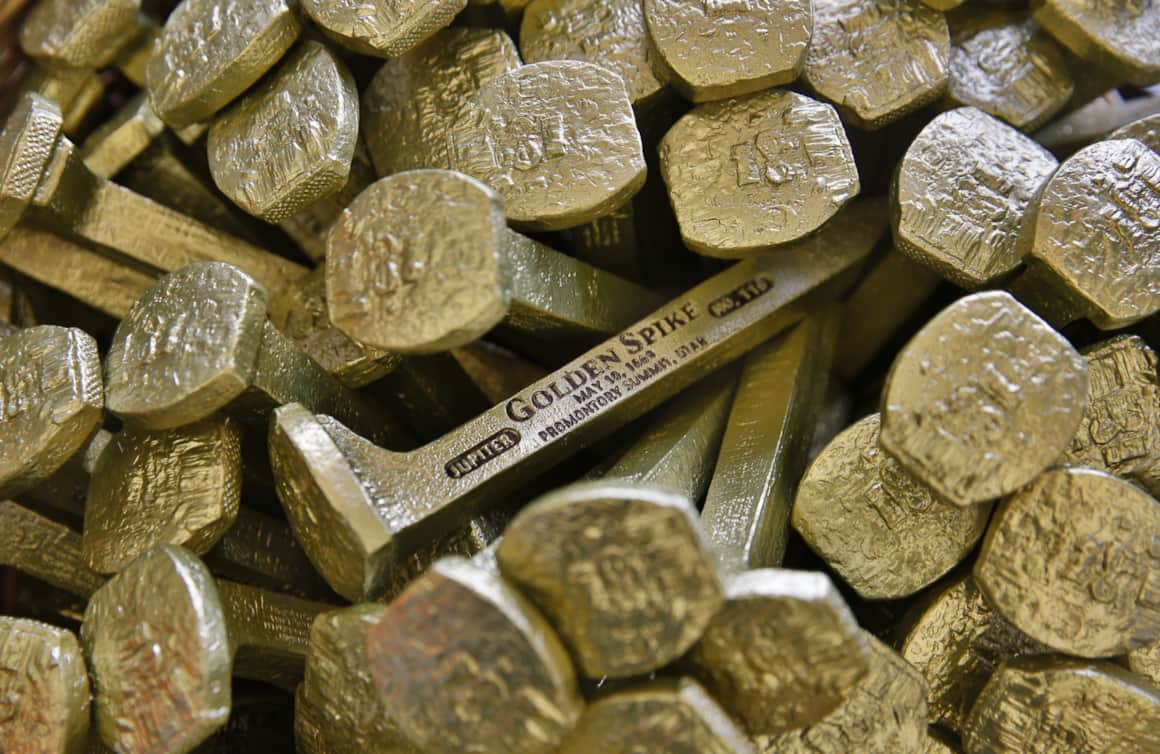
In 1869, workers for the Central Pacific and Union Pacific drove the ceremonial “golden spike” into the ground connecting the First Transcontinental Railroad.
"The driving of the golden spike at Utah’s Promontory Summit in 1869 marked the completion of the transcontinental railroad and the beginning of a rich rail history."
Embrace the Vastness of the West, One Rail Mile at a Time
Train rail lines do more than just connect dots on a map — they thread together moments and memories and allow us to witness the country's landscape. Riders find themselves reflecting on the immensity of nature, the resilience of pioneers and their place in the tapestry of time, emerging from the journey transformed, with a renewed sense of wonder and a deeper connection to the world around them.
For those drawn to the quiet beauty of the wild, the deep roots of American history, or just eager to uncover the West's wild side and have some fun with the family, Utah’s trains offer a path. So, clean off those binocular lenses, get comfortable and witness the endless, raw beauty of Utah.
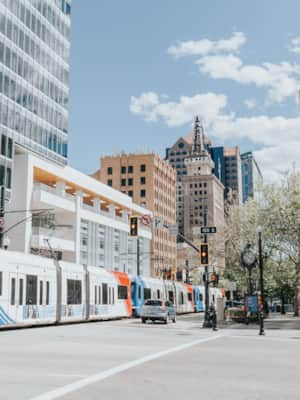
Urban Railways
The Wasatch Front has a light rail system operated by Utah Transit Authority (UTA) called TRAX. TRAX serves Salt Lake City International Airport, the Intermodal Hub, the Delta Center (home of the Utah Jazz), Historic Temple Square, City Center, the University of Utah and Rio Tinto Stadium (home of Real Salt Lake).
